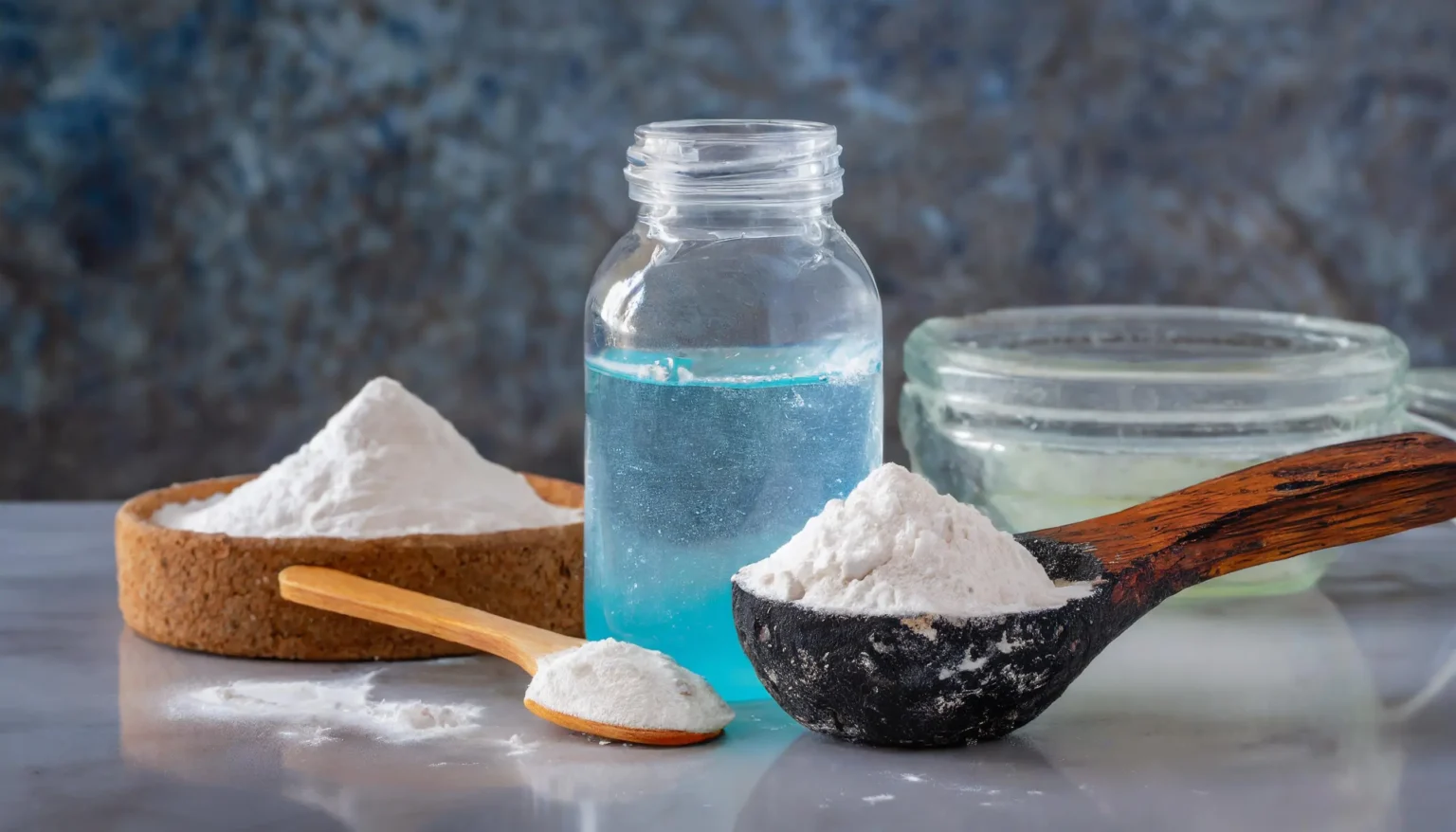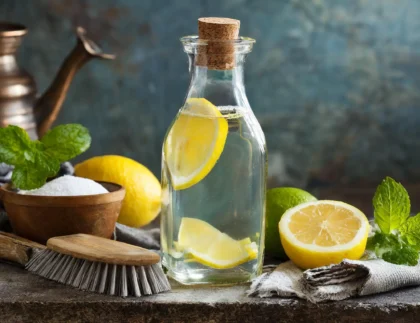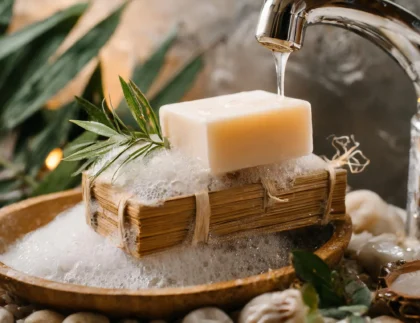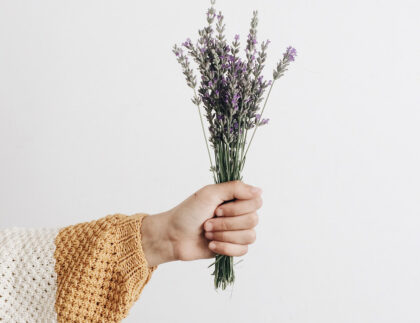
Introduction
Dealing with black mold can be a daunting task, especially when you're not sure where to start. Whether it's black mold in your shower, mold spots on your ceiling, or even white mold on your sheetrock, it's essential to address the problem promptly and effectively to ensure a safe and healthy living environment for you and your family.
Table of Contents
ToggleBaking Soda and Hydrogen Peroxide for Black Mold Removal
Method:
- Make a paste: Mix baking soda with water to form a thick paste. Add hydrogen peroxide in a 1:1 ratio to the baking soda paste.
- Apply to surface: Spread the paste on the black mold-affected area. Leave it on for 30 minutes.
- Remove and clean: Scrub the paste off with a rag or brush. Rinse the surface thoroughly with water.
Notes:
- This method is suitable only for small, hard surfaces.
- Avoid using it on porous surfaces as it may damage them.
- Hydrogen peroxide can lighten some materials.
Alternative solutions:
- Vinegar: Mix vinegar with water in a 1:1 ratio and spray on the surface. Let it sit for 30 minutes, then wipe clean.
- Tea tree oil: Add a few drops of tea tree oil to water and spray on the surface. Leave it on for 10 minutes, then wipe clean.
Remember:
- It's crucial to address the source of moisture to prevent black mold from returning.
- For severe black mold problems, consult a professional.
Additional Tips:
- Cotton swabs dipped in the baking soda and hydrogen peroxide solution can be used to remove black mold from grout and silicone.
- After removing black mold, ventilate the room to prevent regrowth.
Safety Note:
- Always exercise caution when using chemicals and follow safety instructions.

Best Products to Remove Black Mold from Shower
Here are some of the best products to remove black mold from shower:
- Bleach: Bleach is a powerful disinfectant that can kill black mold. Be sure to wear gloves and a mask when using bleach, and ventilate the area well.
Bleach to remove black mold
- Hydrogen peroxide: Hydrogen peroxide is another effective mold killer. It is less toxic than bleach and does not produce strong fumes.
Hydrogen peroxide to remove black mold
- Vinegar: Vinegar is a natural cleaner that can kill mold. It is also safe for use on most surfaces.
Vinegar to remove black mold
- Commercial mold removers: There are a number of commercial mold removers available. These products typically contain a bleach or hydrogen peroxide solution.
Tips for using mold removers:
- Always follow the directions on the product label.
- Wear gloves and a mask when using mold removers.
- Ventilate the area well.
- Rinse the area with water after using a mold remover.
Preventing black mold from returning:
- Keep the shower area clean and dry.
- Ventilate the bathroom after showering.
- Use a dehumidifier to reduce humidity in the bathroom.
- Repair any leaks in the shower.
Note:
- If you have a severe black mold problem, you may need to hire a professional to remove it.
Vinegar for Black Mold on Wood
What you'll need:
- White vinegar
- Water
- A mask
- Gloves
Steps:
- Prepare. Mix white vinegar and water in a 1:1 ratio. Put on a mask and gloves.
- Apply. Spray the wood surface with the vinegar solution. Let it air dry.
- Repeat. Repeat the process as needed until the black mold is completely gone.
Notes:
- Vinegar may not be effective for severe black mold growth.
- Test the vinegar in an inconspicuous area before using it on wood.
- Vinegar may damage some types of wood.
Additional tips:
- After removing the black mold, clean the wood surface with soapy water.
- Dry the wood thoroughly to prevent black mold from returning.
- Increase ventilation in the area to prevent moisture condensation.
Remember:
- Black mold can be harmful to your health.
- If you have a severe black mold problem, consult with a professional.
Best Way to Remove Black Mold
What you'll need:
- A mask and gloves
- A brush
- A rag
- A fungicide spray
Steps:
- Prepare the area. Put on a mask and gloves to protect yourself from black mold spores. Gather your supplies.
- Remove the black mold. Scrub the surface with a brush to remove visible black mold. Spray the surface with a fungicide and let it dry.
- Prevent black mold from returning. Identify and fix the source of moisture that is causing the black mold. Improve ventilation in the area and dry it out regularly.
Additional tips:
- Do not use bleach to remove black mold, as it can make the problem worse.
- Thoroughly clean all tools and surfaces that came into contact with black mold.
- Monitor the area to make sure the black mold does not return.
Important:
- Black mold can be harmful to your health. If the problem is severe, consult with a professional.
Risks of Black Mold Exposure
Here are some of the risks of black mold exposure:
- Allergic reactions: Black mold can trigger allergic reactions in people who are allergic to mold. Symptoms of an allergic reaction to black mold can include sneezing, coughing, congestion, and itchy eyes.
- Asthma attacks: Black mold can trigger asthma attacks in people who have asthma. Symptoms of an asthma attack can include shortness of breath, wheezing, and coughing.
- Infections: Black mold can cause infections in people with weakened immune systems. Symptoms of a black mold infection can include fever, cough, and shortness of breath.
It is important to note that not everyone who is exposed to black mold will experience health problems. However, people who are allergic to mold, have asthma, or have weakened immune systems are at increased risk of developing health problems from black mold exposure.
If you think you may have been exposed to black mold, it is important to see a doctor. The doctor can diagnose any health problems that may have been caused by black mold exposure and recommend treatment.
Here are some tips to prevent black mold exposure:
- Control moisture: Black mold needs moisture to grow. Keep your home dry by fixing leaks, ventilating bathrooms and kitchens, and using a dehumidifier.
- Clean up mold quickly: If you see black mold, clean it up right away. Use a mold remover or a mixture of bleach and water.
- Prevent mold growth: Keep your home clean and free of clutter. Mold can grow on damp surfaces, so make sure to dry out any wet areas.
By following these tips, you can help to prevent black mold exposure and protect your health.
Does Hydrogen Peroxide Kill Black Mold?
Yes, hydrogen peroxide can kill black mold. It is a natural disinfectant that can be used to kill mold on a variety of surfaces. Hydrogen peroxide is less toxic than bleach and does not produce strong fumes.
To use hydrogen peroxide to kill black mold:
- Mix hydrogen peroxide with water in a 1:1 ratio.
- Apply the mixture to the moldy surface with a spray bottle or brush.
- Let the mixture sit for 10-15 minutes.
- Scrub the moldy surface with a brush.
- Rinse the area with water.
It is important to note that hydrogen peroxide may not be effective at killing black mold on porous surfaces. Porous surfaces, such as wood and drywall, can absorb mold spores. If you have black mold on a porous surface, you may need to hire a professional to remove it.
Here are some tips to prevent black mold growth:
- Control moisture: Black mold needs moisture to grow. Keep your home dry by fixing leaks, ventilating bathrooms and kitchens, and using a dehumidifier.
- Clean up mold quickly: If you see black mold, clean it up right away. Use a mold remover or a mixture of bleach and water.
- Prevent mold growth: Keep your home clean and free of clutter. Mold can grow on damp surfaces, so make sure to dry out any wet areas.
By following these tips, you can help to prevent black mold growth and protect your health.
Health Concerns and Symptoms of Black Mold Exposure
Health Concerns:
- Allergic reactions: Black mold can trigger allergic reactions in people who are allergic to mold. Symptoms of a black mold allergy can include sneezing, coughing, congestion, and itchy eyes.
- Asthma attacks: Black mold can trigger asthma attacks in people with asthma. Symptoms of an asthma attack can include shortness of breath, wheezing, and coughing.
- Infections: Black mold can cause infections in people with weakened immune systems. Symptoms of a black mold infection can include fever, cough, and shortness of breath.
Symptoms:
- Respiratory: Sneezing, coughing, congestion, shortness of breath, wheezing.
- Skin: Itching, rash, irritation.
- Eyes: Itching, redness, watering.
- Other: Headache, fatigue, muscle and joint aches.
It is important to note that not everyone who is exposed to black mold will experience health problems. However, people who are allergic to mold, have asthma, or have weakened immune systems are at increased risk of developing health problems from black mold exposure.
If you think you may have been exposed to black mold, it is important to see a doctor. The doctor can diagnose any health problems that may have been caused by black mold exposure and recommend treatment.
Black Mold Eradication and Prevention
- Identify and address the source of moisture: Fix leaky pipes, faucets, or roof problems that are allowing moisture to build up.
- Remove the black mold: Clean the affected surface with a solution of bleach or hydrogen peroxide. Wear gloves, a mask, and ensure proper ventilation.
- Dry the area thoroughly: After removing the mold, dry the area completely to prevent regrowth.
Preventing black mold growth in your home:
- Control moisture: Fix leaks promptly, ensure proper ventilation in bathrooms and kitchens with exhaust fans, and use a dehumidifier in humid areas.
- Clean up mold quickly: If you see black mold, clean it up right away using a bleach or hydrogen peroxide solution. Discard heavily mold-infested items.
- Prevent future growth: Regularly clean and disinfect surfaces in bathrooms and kitchens. Keep your home clean and clutter-free to minimize dust. Address any condensation issues to prevent moisture build-up.
Remember:
- Prevention is key! Regular cleaning and moisture control can help you avoid black mold problems.
- Consult a professional for severe black mold infestations.
Baking Soda:
- Tile Grout: Baking soda can effectively remove mold from tile grout. Make a paste using baking soda and water, apply it to the moldy grout, and scrub with a brush. Rinse thoroughly with water.
- Bathtub: Sprinkling baking soda directly onto a damp bathtub surface can help remove mold and mildew stains. Scrub the surface with a sponge or brush, then rinse with water.
- Shower Curtain: Soak a moldy shower curtain in a solution of baking soda and water. After soaking for a few hours, scrub the curtain with a brush, rinse thoroughly, and allow it to dry.
- Refrigerator: Mold sometimes grows inside refrigerators, especially on rubber seals. Wipe down affected areas with a solution of baking soda and water to remove mold and neutralize odors.
- Clothing: For moldy clothing, add a cup of baking soda to the washing machine along with detergent. Wash the clothes in warm water, then hang them to dry in direct sunlight, which helps kill mold spores.
Bleach:
- Kitchen Sink: Diluted bleach can effectively remove mold from kitchen sinks. Apply a bleach solution to the affected areas, let it sit for a few minutes, then scrub with a brush and rinse thoroughly.
- Basement Walls: Mold often grows on basement walls due to moisture. Use a bleach solution to clean moldy areas on concrete or painted walls. Scrub the surface, then rinse with water.
- Outdoor Furniture: Mold can develop on outdoor furniture, especially during humid weather. Use a bleach solution to clean moldy surfaces of plastic or metal furniture. Scrub well and rinse with a hose.
- Wood Surfaces: Diluted bleach can be used to remove mold from sealed or painted wood surfaces, such as baseboards or furniture. Apply the bleach solution, scrub gently, and rinse with water.
- Bathroom Tiles: Bleach is effective at killing mold on bathroom tiles. Spray or apply a bleach solution to the moldy tiles, let it sit for a few minutes, scrub with a brush, and rinse thoroughly with water.
Effective Solution: Baking soda and hydrogen peroxide are highly effective for removing black mold from various surfaces.
Combination Power: When combined, they not only eliminate black mold but also neutralize odors, ensuring thorough and lasting mold removal.
Eco-Friendly Option: This natural solution offers an eco-friendly alternative to harsh chemical cleaners for combating black mold, promoting a safer and healthier environment.
Specialized Cleaners: Look for specialized cleaners designed explicitly for targeting black mold in the shower. These products are formulated to effectively remove and prevent the recurrence of black mold stains.
DIY Solutions: DIY solutions can also be effective for black mold removal in the shower. Options like baking soda and hydrogen peroxide offer eco-friendly alternatives that effectively combat black mold while neutralizing odors.
Preventive Measures: After removing black mold from the shower, implement preventive measures such as proper ventilation and regular cleaning to inhibit future black mold growth and maintain a clean, healthy environment.
Health Risks: Exposure to black mold can pose serious health risks, including respiratory problems, allergic reactions, and neurological symptoms in some cases. These health issues can be particularly concerning for individuals with pre-existing conditions or compromised immune systems.
Property Damage: In addition to health risks, black mold can also cause structural damage to buildings and property. It can deteriorate surfaces over time, leading to costly repairs and potentially compromising the integrity of the affected area.
Prompt Action Needed: Given the risks associated with black mold, it's crucial to address any black mold infestations promptly and effectively. Seeking professional help may be necessary to ensure thorough removal and mitigate potential health and property damage risks.
Effective Solution: Yes, vinegar can effectively remove mold from wood surfaces due to its acidic properties, which help break down and eliminate mold growth.
Preparation and Application: Diluting vinegar with water in equal parts and applying it directly to the moldy areas of the wood surface is a common method. Allowing the vinegar solution to dwell on the surface for at least an hour before scrubbing and rinsing is recommended for best results.
Preventive Measures: To prevent future mold growth, addressing underlying moisture issues and ensuring proper ventilation are essential. Regular inspection and cleaning of wood surfaces can help maintain a mold-free environment.
Effectiveness: Yes, hydrogen peroxide can be an effective solution for killing black mold due to its oxidizing properties, which can destroy fungi, including mold.
Preparation and Application: To use hydrogen peroxide for black mold removal, it should be diluted with water and then sprayed or applied directly to the affected mold areas. The solution should be left on the surface for some time, and then wiped or rinsed off to remove the mold.
Preventive Measures: After removing black mold with hydrogen peroxide, it's important to take preventive actions such as improving ventilation, addressing moisture issues, and regular cleaning to prevent mold regrowth.
Effectiveness: Yes, hydrogen peroxide can be effective for removing black mold due to its antimicrobial properties, which help in killing mold spores and preventing further growth.
Application: When using hydrogen peroxide, it should be applied directly to the black mold-affected areas and left to sit for some time to ensure thorough penetration and action against the mold.
Considerations: While hydrogen peroxide can be a viable option, its effectiveness may depend on factors such as the concentration used, the extent of mold growth, and the surface material.
Symptoms: Signs of black mold-related illness may include respiratory issues such as coughing, wheezing, or difficulty breathing, as well as allergic reactions like sneezing, runny nose, or skin rashes.
Neurological Symptoms: Additionally, individuals exposed to black mold may experience neurological symptoms like headaches, dizziness, or difficulty concentrating, indicating potential health risks associated with black mold exposure.
Medical Attention: If experiencing any of these symptoms, especially in environments with black mold presence, seeking medical attention promptly is crucial to address potential health implications.
Cleaning Methods: Effective methods for removing black mold from various surfaces include using solutions like hydrogen peroxide, vinegar, or alcohol, depending on the surface type and extent of mold infestation.
Thorough Cleaning: Regardless of the surface, thorough cleaning and disinfection are essential to effectively eradicate black mold and prevent its regrowth, ensuring a safe and healthy environment.
Preventive Measures: Implementing preventive measures such as improving ventilation, addressing moisture issues, and using mold-resistant products can help minimize the risk of black mold growth on different surfaces in the future.
Effective Eradication: Black mold can be eradicated by using methods like hydrogen peroxide, vinegar, or alcohol for thorough cleaning and disinfection of affected areas.
Preventive Measures: To prevent black mold regrowth, it's crucial to address underlying moisture issues, maintain good ventilation, and regularly inspect and clean surfaces prone to mold growth.
Regular Maintenance: Implementing proactive measures such as using mold-resistant products and conducting routine cleaning can help prevent black mold from returning and ensure a healthier living environment.
Assessment: Conduct a thorough assessment to identify areas affected by black mold, including walls, ceilings, floors, and furniture.
Prompt Action: Take prompt action to address the black mold issue by using effective cleaning methods such as hydrogen peroxide, vinegar, or specialized cleaners to eradicate the mold and prevent further spread.
Safety Precautions: Ensure safety by wearing protective gear like gloves and masks when handling black mold and follow proper cleaning protocols to minimize health risks associated with mold exposure.
Health Risks: Yes, exposure to black mold in the home can pose health risks, including respiratory problems, allergic reactions, and even neurological symptoms in some cases.
Symptoms: Common symptoms of mold-related illness may include coughing, sneezing, nasal congestion, throat irritation, skin rashes, headaches, and fatigue.
Precautions: To mitigate health risks, it's essential to promptly address any black mold issues in the home, seek professional help if necessary, and take preventive measures to minimize future mold growth.
Alcohol's Effectiveness: Yes, alcohol, such as isopropyl alcohol or ethanol, can effectively kill black mold on surfaces due to its antimicrobial properties.
Application: To use alcohol for black mold removal, simply apply it directly to the affected areas, ensuring thorough coverage to effectively eliminate the mold.
Safety Considerations: While alcohol can be effective against black mold, it's essential to use it in a well-ventilated area and take proper safety precautions, such as wearing gloves and a mask, to avoid exposure to fumes.
Health Hazards: Bleach can emit harmful fumes when mixed with mold, posing respiratory risks and irritating the eyes and skin.
Limited Effectiveness: While bleach may remove surface mold, it doesn't penetrate porous materials well, potentially leaving behind mold roots to regrow.
Surface Damage: Bleach can damage certain surfaces, such as wood and fabrics, and may discolor or corrode materials over time.
Ventilation: Ensure proper ventilation by opening windows or using exhaust fans to minimize exposure to mold spores and fumes.
Protective Gear: Wear gloves, a mask, and eye protection to shield yourself from direct contact with black mold and cleaning chemicals.
Effective Cleaning: Use appropriate cleaning agents like vinegar or hydrogen peroxide to effectively remove black mold from surfaces while minimizing health risks.
Health Risks: Black mold on wooden furniture can pose health risks if left untreated, as exposure to its spores may lead to respiratory issues and allergic reactions.
Prompt Removal: It's essential to promptly remove black mold from wooden furniture to mitigate health hazards and prevent further contamination.
Preventive Measures: Implement preventive measures such as proper ventilation and moisture control to discourage black mold growth on wooden surfaces.
Possibility of Regrowth: Yes, black mold can regrow on surfaces even after it has been removed if the underlying moisture problem is not addressed.
Preventive Measures: Implement preventive measures such as proper ventilation, moisture control, and regular cleaning to inhibit black mold regrowth.
Professional Inspection: Consider hiring professionals to assess and address the root cause of mold growth to prevent recurrence effectively.
Visible Discoloration: Look for black or dark green patches on surfaces, particularly in damp or humid areas like bathrooms, basements, or attics.
Musty Odor: Pay attention to any musty or earthy smells, especially in areas with poor ventilation, as this could indicate the presence of black mold.
Allergic Reactions: Be aware of allergic symptoms such as sneezing, coughing, or skin irritation that worsen when spending time in certain areas of the home, which could be due to exposure to black mold spores.
Maintain Dryness: Ensure proper ventilation in areas prone to moisture buildup, such as bathrooms, kitchens, and basements, to discourage black mold growth.
Regular Cleaning: Routinely clean and inspect areas susceptible to black mold, like shower curtains, grout lines, and window sills, to remove any moisture or mold spores.
Use Mold-Resistant Products: Consider using mold-resistant materials for construction and renovation projects, especially in moisture-prone areas, to minimize the risk of black mold development.
Vinegar Solution: A mixture of vinegar and water can effectively eliminate black mold from various surfaces, providing a natural and eco-friendly solution.
Hydrogen Peroxide: Hydrogen peroxide can be another natural remedy for black mold removal, offering antimicrobial properties to combat mold growth effectively.
Baking Soda: Baking soda, when combined with hydrogen peroxide, forms a powerful solution that not only kills black mold but also neutralizes odors, providing a natural alternative for mold removal.
Vacuuming: Start by vacuuming the fabric surface to remove any loose mold spores and debris, being careful not to spread the mold further.
Cleaning Solution: Create a cleaning solution using mild detergent and water, then apply it to the affected area using a sponge or cloth, gently scrubbing to remove the black mold stains.
Sunlight and Fresh Air: After cleaning, allow the fabric to dry in direct sunlight and fresh air, as sunlight helps kill mold spores and fresh air aids in drying and ventilation, effectively removing black mold from fabric surfaces.
Indoor Air Quality: Yes, black mold can significantly impact indoor air quality by releasing spores and mycotoxins into the air, which can cause respiratory issues and other health problems.
Health Risks: Exposure to black mold spores can lead to respiratory problems, allergic reactions, and other health issues, making it essential to address any black mold growth to maintain good indoor air quality.
Prevention and Removal: Regular inspection, proper ventilation, and prompt removal of black mold are crucial steps in improving and maintaining indoor air quality in spaces affected by black mold growth.
Extensive Growth: If black mold covers a large area (typically more than 10 square feet), it's advisable to hire a professional for safe and thorough removal.
Hidden Mold: Professional assistance may be necessary if black mold is hidden within walls, ceilings, or other structural components, requiring specialized equipment and expertise for detection and removal.
Health Concerns: Individuals with underlying health conditions, such as respiratory issues or compromised immune systems, should consider hiring professionals to handle black mold removal to minimize health risks and ensure proper remediation.





